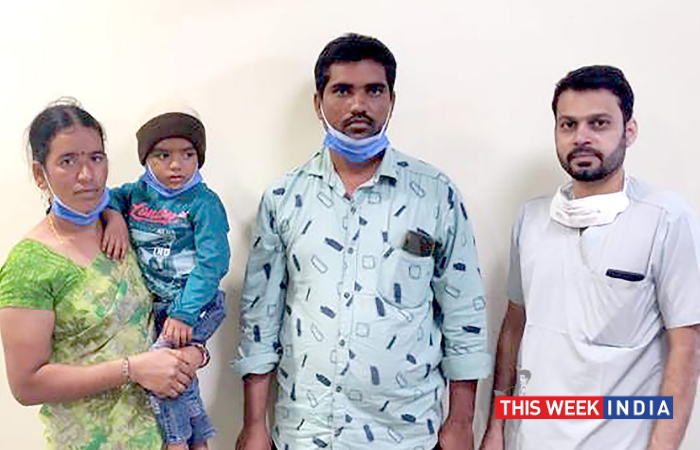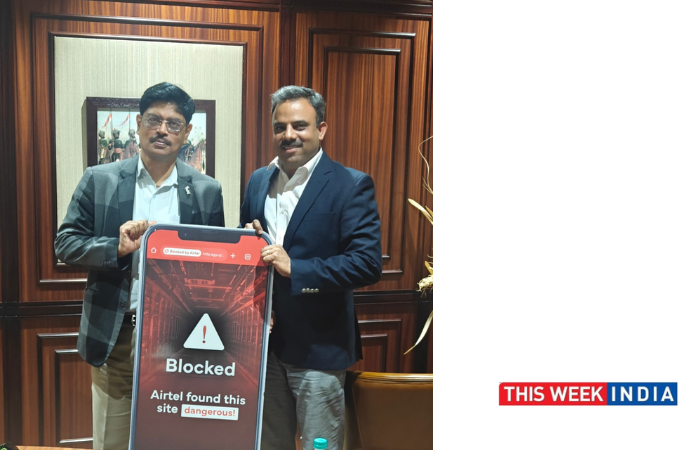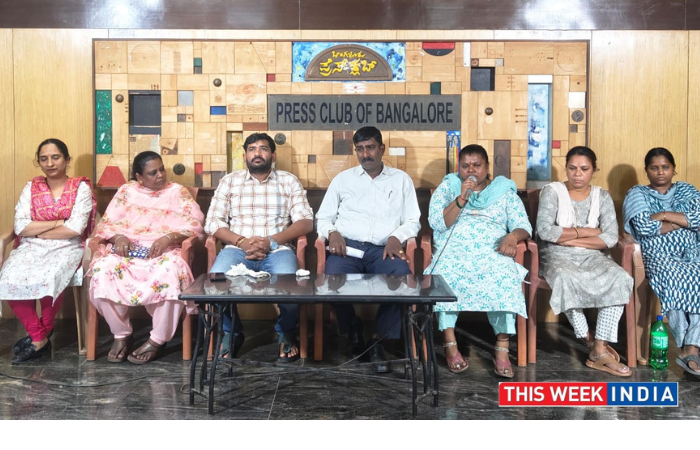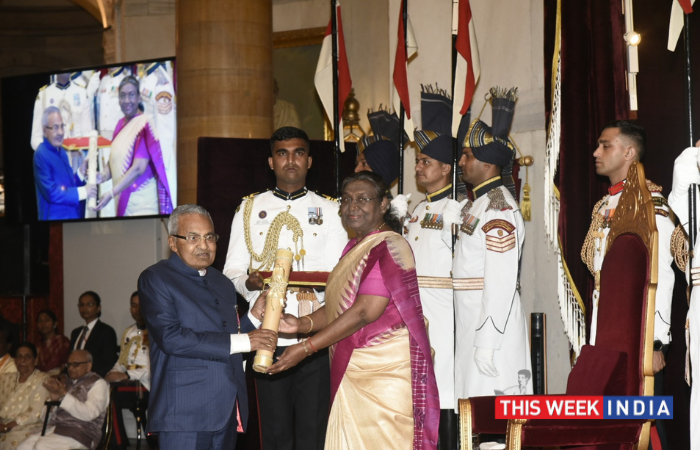Harichandra becomes the youngest child in the country and only the second child in the world to undergo a sequential segmental whole lung lavage
- Doctors wash Harichandra’s lungs for around 6 hours to remove the unwanted protein from the lungs of the child
Bangalore, June 21, 2021 – Harichandra, a 1 year 9 month old toddler child, who was afflicted with a rare and life-threatening disorder called Hereditary Primary Pulmonary Alveolar Proteinosis (PAP), was finally able to breathe freely after suffering for more than 6 months through the efforts taken by doctors at Aster CMI Hospital who conducted a complicated sequential segmental whole lung lavage procedure on both of his lungs in the same session. Hailing from Nalgonda district, Telangana, Harichandra is the youngest child in the country and only the second child in the entire world to undergo this complex procedure. The entire procedure lasted for approximately 6 hours, and a team headed by Dr. Srikanta J T, Consultant- Paediatric interventional Pulmonology, allergy and sleep medicine, Aster CMI Hospital washed the lungs of the child with warm saline water — much like a dish — to cure a rare disorder and remove the excess protein that had flooded the child’s lungs and had caused breathlessness in him.
Harichandra was diagnosed as persistent pneumonia at 1 year of age and by the time he was 1 year 4 months old, he was oxygen dependent with breathlessness and required 2-3 liters of oxygen per minute. The child was treated for persistent pneumonia several times at his home town with IV antibiotics, steroids and other supportive measures. However, since the local hospitals were unable to diagnose and treat the condition, the child was then referred to Aster CMI Hospital. Child initially underwent Cryobiopsy of lung (Youngest child to undergo this procedure in the world) to prove PAP, followed by a genetic confirmation and a definitive treatment in the form of sequential segmental whole lung lavage
Pulmonary Alveolar Proteinosis (PAP) is a rare lung condition that causes the buildup of protein deposits such as protein, fats and substances (collectively called surfactant) in the alveoli (air sacs) of the lungs. This further leads to a blockage in the transfer of oxygen into the blood due to which patients experience breathlessness and over a period of time oxygen dependency. This condition affects around 1 person in 100,000 people worldwide and generally develops in adults of the age group 30-60 years, but in certain cases it can be congenital. If left untreated, the breathing of the patient can worsen until they enter a life-threatening respiratory failure.
Explaining the criticality of Harichandra’s case, Dr. Srikanta J T, Consultant- Paediatric interventional Pulmonology, allergy and sleep medicine, Aster CMI Hospital, said: “Harichandra had hereditary primary pulmonary alveolar proteinosis which made his condition a one in a million. When he was referred to our hospital, the child had a history of persistent cough, breathlessness and was breathing 50 times per minute. Normally, children breathe 20-30 times per minute that indicated that there was some complication in his lung that was impacting his breathing. The child had an oxygen saturation of 75 which was lesser than the usual oxygen level. In normal individuals the oxygen saturation usually ranges above 95. We had conducted a genetic testing of the whole family and found that his younger sister who was then 6 months old was also diagnosed with the same condition. We have kept his younger sister in observation, however, she is yet to show any symptoms of protein accumulation leading to breathlessness and oxygen dependency. While analyzing his condition, we also conducted a cryo lung biopsy of the child and post our assessment we began the child’s treatment with a procedure called sequential segmental whole Lung Lavage (WLL). In this procedure, while putting the child on the ventilator, we washed both right side (2.5 litres) and left side (2 litres) volumes of warmed normal saline through a bronchoscope sequentially respectively. In normal individuals the surfactants are secreted and are continuously removed in the lungs, however, in PAP, these surfactant proteins fail to get removed from the lungs that further causes a progressive difficulty in breathing among the patients. Just 1 day after the treatment, Harichandra was able to breathe freely i.e. with no oxygen and his breathing rate of 50’s had come back to normal (20/min). As there are chances that the protein may return in the child’s body over a period of time, hence, we have kept him under observation.”
Thanking the doctors, Sridharan, child’s father said: “Our child was having breathlessness and increased need for oxygen since the last one year and it was extremely painful for us to see our little one be dependent on oxygen at such a young age. We visited several private and government hospitals, however, it was a doctor in Hyderabad who eventually referred us to Aster CMI. When our son’s breathing became acute, we were then referred to Aster CMI Hospital where the doctors analyzed his condition and provided him with the life-saving treatment. I am extremely thankful to the team of doctors and the nursing staff at Aster CMI Hospital who took extremely good care of my child and ensured that he is able to breathe freely and begin his life normally just like other kids.”









